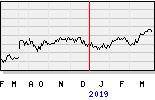
Unilever’s Vivek Nesarikar, Global Engineering Manager, explains how heat pump technology holds the key to achieving 100% renewable thermal energy in our factories by 2030.
At Unilever, our Climate Transition Action Plan sets out the steps we’re taking to reach our climate targets, including reducing greenhouse gas emissions in our own operations by 100% by 2030, against a 2015 baseline.
In a series of interviews, we put the spotlight on some of the people who are helping to deliver our action plan and make change happen.
Vivek Nesarikar, our Global Engineering Manager for heating technologies is based in Mumbai, India, and has been with Unilever for 11 years. Here he explains how we’re using waste heat energy to help lower our operational emissions.
What does Unilever use thermal energy for?
As well as providing heat and hot water in our factories, thermal energy sources can be used during production processes, like pasteurisation for our ice cream, and for cleaning processing equipment in our machinery (known as CIP – Cleaning in Place).
In our operations, thermal energy use accounts for most of our carbon footprint. When we develop decarbonisation roadmaps for our sites, thermal electrification – either through heat pumps, electric boilers or a combination of both – is emerging as a common solution.
In total, over a third of our thermal energy use is currently drawn from renewable sources. To meet our target of achieving 100% renewable heat by 2030, we will be looking to significantly increase our use of heat pumps across our operations.
What is renewable thermal energy?
Renewable thermal energy is energy generated to provide heating or cooling services, drawn from renewable sources like solar, geothermal or biogenics. Biogenics include biomass, biodiesel and biomethane.
Biomass is energy created using material from forests or farming, biomethane is gas produced through the breakdown of agricultural residue or gases from landfill, and biodiesel is a diesel formed from plant oils or fats.
What is heat pump technology and how do we use it?
Heat pumps allow us to capture cooler (low grade), waste heat in our factories and use compression to convert it into hotter (high grade) heat that we can then reuse in our manufacturing. For one unit of electricity consumption, we can get three to four units of useful heat.
There are two main types of heat pumps – water source and air source. We use both within our operations. For example, in some of our factories, we’re using water source heat pumps to recycle waste heat produced by our air compressors, chillers, and ammonia systems, saving us money and energy. When a waste heat source is not available nearby, then we deploy air source heat pumps.
see & read more on
https://www.unilever.com/news/news-search/2023/how-were-meeting-the-challenge-of-100-renewable-thermal-energy/?utm_source=SignUp&utm_medium=Email&utm_campaign=NewsSignUp
